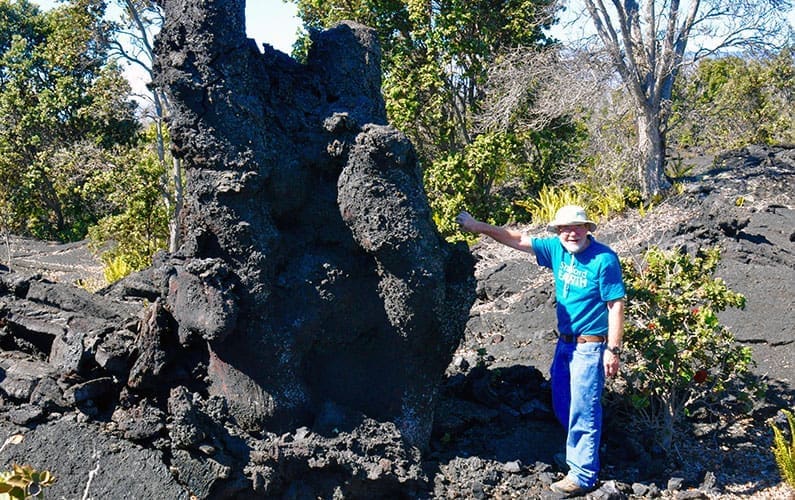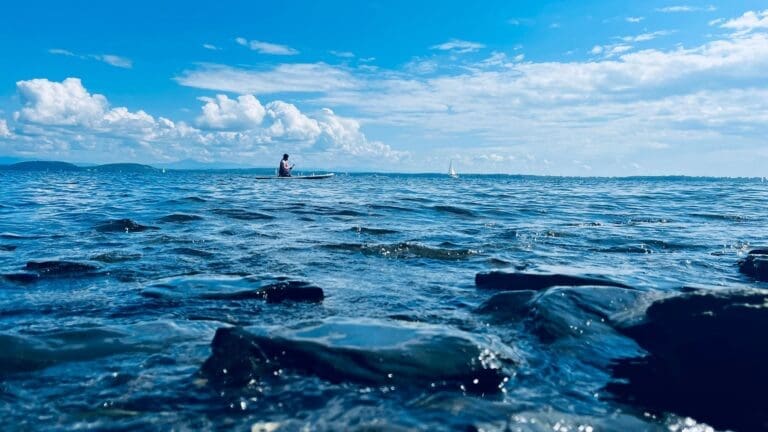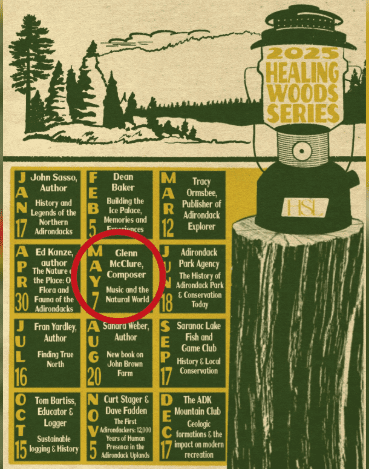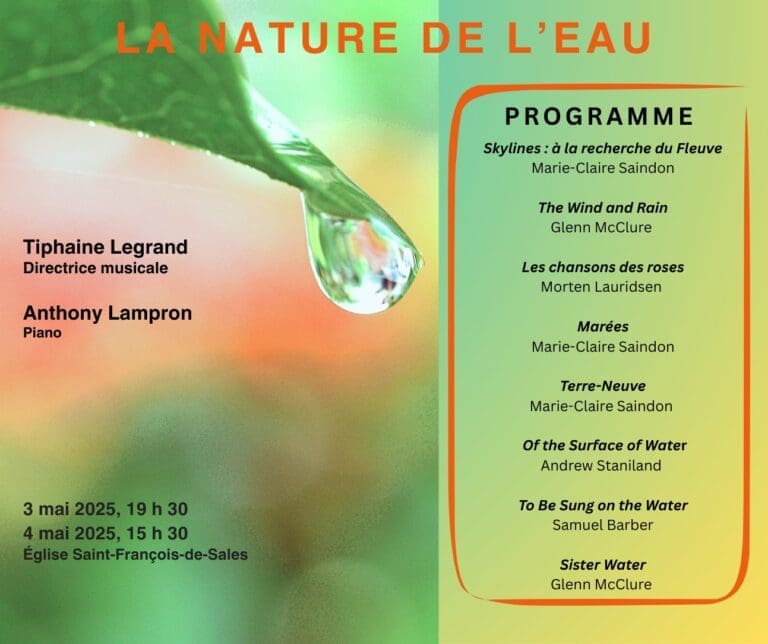Lava Trees – Courage and Stamina

The Tour
To compose music about volcanos, I need a crash-course in volcanology. This is Dr. Don Swanson from the US Geological Survey, my “go-to guy” for all geological things during my artist-in-residence with the National Parks Arts Foundation. Today, Don led me on a tour of the Hawai’i Volcanos National Park, trying to get a look at things before the anticipated government shutdown. Don is one of those rare scholars who moves effortlessly from explaining the science of volcanos to exploring the role that science has played in Hawaiian history and religion. I am so grateful for his ability to put these various bodies of knowledge together in a way that a composer can understand.
Those of us who only learn about volcanos from school books have the stereotypical image of a steep, mountainous cone coughing up smoke and belching lava from the summit. Hawai’i twists, stretches, and occasionally blows away those assumptions. Two of the three centers of volcanic activity, Mauna Loa, and Mauna Kea, rise upwards of 13,000 feet from the ocean with gentle slopes culminating in rounded summits. No sharp cones. The third center, Kilauea, is not even a mountain. It is a crater in a flat landscape surrounded by an extended ring of young lava called a “caldera.” While smoke and sulfuric gases puff out of the caldera, I was surprised to see steam billowing out of the ground under my feet. The ambient, underground heat that radiates from the inner workings of the volcano is hot enough to boil the moisture captured within the soil.
Lava Trees
By a long shot, the biggest mind-twister that Don delivered on my first tour of the park was the lava tree. With the help of gravity, a lava flow makes its way from the rim of a volcano to the coastline, or some resting place in between. I always envisioned this wall of liquid rock and fire incinerating everything in its path. I couldn’t imagine anything standing against it. Enter the lava tree. When super-heated, liquid lava encounters a tree of average temperature, rather than burning the tree, sometimes the temperature differential “freezes” the lava on contact, transforming it from liquid to a solid. This creates a solid, rock blanket around the tree. To get your mind around this, perhaps a more familiar (and opposite) example would be helpful. If you hold your finger on the surface of an ice cube, the ice melts faster at that point. Your finger does not have to be as hot as an open flame. The difference between the rather mundane temperature of your skin and the ice causes the ice to change from solid to liquid.
Back to the lava tree. Once this initial blanket of cooled lava wraps around the tree trunk, the rest of the lava flows around it. More rock accumulates and the tree becomes gradually encased in rock. This process creates a forest of monuments to this epic battle between trees, fire, and rock.
The science here is fascinating in and of itself, but the inner workings of nature can provide much more. When human attitudes and institutions create confusion, we often look toward the natural world for clarity. I cannot help but admire the courage and stamina exhibited by the tree that stands against a massive lava flow. If the tree is David and the lava is Goliath, we get a brand-new variation on this ancient story. We begin with the classic underdog battle between the weak and powerful but the story ends with a surprising twist. Rather than one combatant prevailing over the other, the encounter changes both the tree and the surrounding lava forever. It leaves behind an enduring record of this epic struggle written in rock not words. The fundamental differences between trees and liquid rock speak to generations of anyone willing to read the lavascape. We need not always win or lose. Sometimes it is enough to endure the struggle and leave behind a record of that struggle for others to read.

I am grateful for Don for translating this unfamiliar text to someone who only reads words and music. If we learn to read many languages, including the languages of nature and the Arts, we can find new inspiration to face the challenges of today and tomorrow. The next time you face what feels like insurmountable odds, remember the lava trees.







